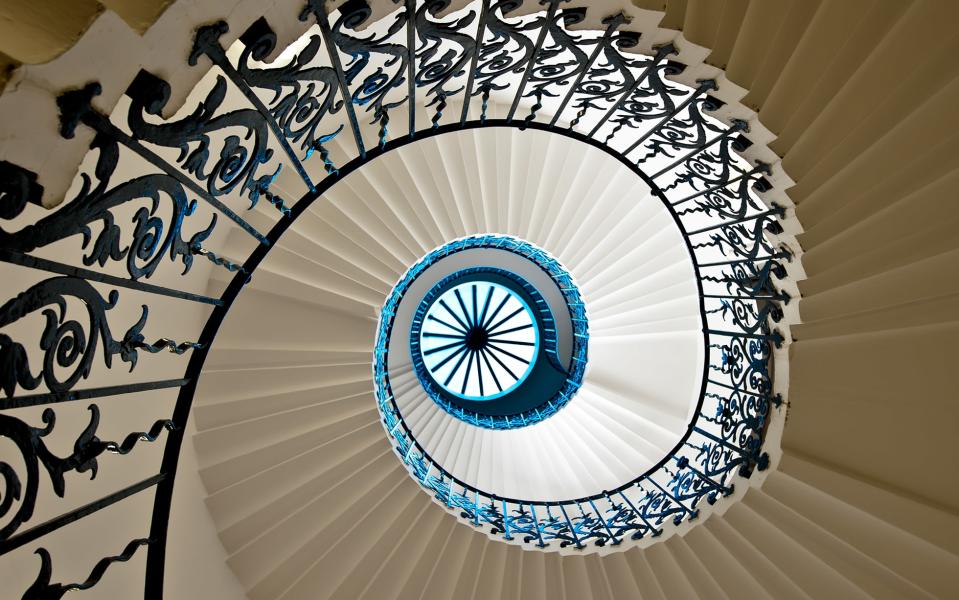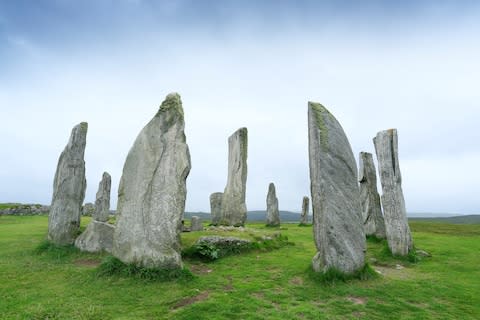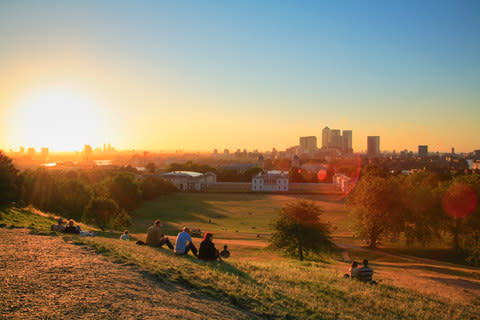Six of Britain's most overpriced attractions – and the free alternatives

There’s no shortage of things to do in Britain, but some of our best known attractions aren’t exactly conducive to saving money. A weekend in London, with trips to the Tower (entry fee: £27.20), Maddam Tussauds (entry fee: £35) and Buckingham Palace (entry fee: £24), will leave you a lot worse off.
Instead, opt for one of these free alternatives.
£41: Warner Bros. Studio Tour London – The Making of Harry Potter
Visiting this shrine to Harry Potter on the outskirts of Watford might involve a train fare, as well as the £2.50 shuttle bus to the actual attraction. And then there’s the entry fee. A standard ticket for an adult will set you back £41; if you’re a family of four, you’ll find yourself shelling out £132. Not forgetting the souvenirs and snacks.

Free: Harry Potter filming locations
Potter fans travelling on a budget need not miss out on the magic. Much of the eight blockbuster movies were filmed on British soil, and you can see many of the easily-recognisable backdrops for free.
If you want to stick within London, there’s plenty to see. At King’s Cross Station, Harry and chums ran through the wall to reach Platform 9¾ and the Hogwart’s Express, and you can find a half-vanished luggage cart disappearing into the wall at the station for a free photo op. Wander through Claremont Square and you’ll recognise it as the setting for Grimmauld Place. Then there’s Piccadilly Circus – where Harry, Ron and Hermione rushed through the West End, and Leadenhall Market – the exterior for Diagon Alley.
If you’re keen to escape the capital, there are plenty of free sites to be seen around the UK including Durham Cathedral, where much of Hogwarts was shot, Malham Cove, where Harry and Hermione hide out in Harry Potter and the Deathly Hallows Part 1, and Glen Coe, which was the site of Hagrid’s hut and the bridge to Hogwarts.

£35: Madame Tussauds
The appeal of Madame Tussauds is a bit hard to get your head around. Lumps of wax sculpted, dressed and made to look like your favourite star. Really? Now look at the price tag. At £35 per adult and £30 per child for a walk-up ticket, it’s one of the UK’s most expensive attractions. Is it really worth it?

Free: National Portrait Gallery
Conversely, like most major museums in London, the National Portrait Gallery is free, and you’ll actually get to see accurate likenesses by real artists. From 16th century painted portraits of monarchs to 20th century photography, the gallery presents a timeline of significant historical figures.
2018 exhibits include Victorian Giants: The Birth of Art Photography, Michael Jackson: On the Wall and Gainsborough’s Family Album, although unlike the gallery, these do charge an entry fee.

£19.50: Stonehenge
Stonehenge is one of the most impressive prehistoric monuments in the UK. The vast stones date back 5,000 years and have been the subject of much archaeological debate, with some of the volcanic bluestones of the inner ring believed to have been transported 160 miles from Pembrokeshire in Wales. While much of the research suggests that the site was raised for religious purposes, there’s always the wildly entertaining theory that they were placed there by aliens.
Regardless of how the stones came to stand in Salisbury, the site was clearly designed to ensure that the sun rose and set between certain stones during the summer and winter solstices. While you can see the stones from the road (the A303), the walk-up price for an adult without an English Heritage membership is £19.50 and the cost for a family of up to five is £50.70.
Free: Calanais Standing Stones
Dating back as far as Stonehenge – roughly 5,000 years – Calanais Standing Stones are much more isolated than England’s most famous prehistoric site. Found on the Isle of Lewis, the largest island of the Western Isles or Outer Hebrides archipelago in Scotland, they may be difficult to get to, but you won’t be surrounded by the crowds of tourists that Stonehenge is renowned for.
Plus, megalithic Calanais is an open site, which means that you can wander among the historic stones whenever you please. It’s worth checking out the opening times of the Visitor Centre though so that you can learn more about its use as an astronomical calendar and a neolithic site to commemorate the dead.

Other fine stone circles that are free to visit include Castlerigg Stone Circle near Keswick, while to see Arbor Low in Derbyshire or Rollright Stones in Oxfordshire costs just £1.
£27: London Eye
Yes, the London Eye offers spectacular views of London, but it will cost a walk-up fee of £27 per adult and £22 for children for the experience.
On a clear day you can see as far as Windsor Castle from the top of the cantilevered observation wheel, but your pictures will also be impeded by the capsule that you have to view everything through (there are no windows for obvious reasons).
Free: Greenwich Park
If you want to see the London skyline, but don’t want to part with your hard-earned cash, head to Greenwich Park. This is a great place for a walk, close to the National Maritime Museum and the Royal Observatory, and the park even has a small lake complete with pedalos for hire.

At the top of Greenwich Hill, there are some spectacular views of the London skyline. There’s no entry fee to get into the park and it’s best enjoyed on a warm summer day on a blanket, with a picnic and a cool cider or two in hand.
Other options include Parliament Hill and Primrose Hill.
£15: Fountains Abbey
Founded in 1132 by Benedictine monks from York, Fountains Abbey was home to an austere Cistercian Order until 1539 when Henry VIII ordered the Dissolution of the Monasteries. It is a wonderful and atmospheric ruin, but at £15 for adult entry, it is not cheap.

Free: Kirkstall Abbey
Also found in Yorkshire, Kirkstall Abbey has a similar waterside setting, but at a bargain price – free. Building started in 1152 by monks from nearby Fountains Abbey at the behest of Henry de Lacy and shared a similar fate to its neighbour at the hands of Henry VIII.
A substantial amount of the building remains today and the Visitor Centre offers an insight into the site’s history.

£24: Buckingham Palace
A visit to Buckingham Palace is fairly high on the list of any tourist in London. Here you can tour the state rooms, throne room, picture gallery, ballroom, grand staircase, garden and palace treasures, as well as watch the changing of the guard.
Tickets for adults start at £24, but, to the mournful regret of many an American, doesn’t come with a guarantee of spotting royalty or sharing a cup of tea with the Queen.
Free: The Queen’s House
If it’s the history of royalty that you’re interested in, a visit to the Queen’s House in Greenwich offers a nice (though far less grand) alternative and while there’s a noticeable lack of gold leaf, the Tulip Stairs are arguably more enchanting than the grand staircase.
The house was completed around 1636 and was the first fully Classical building in England. It was used by members of the royal family until 1805, when it was gifted to the Royal Naval Asylum, a charity for the orphans of seamen. Today it is home to an impressive art collection, including the Armada Portrait of Elizabeth I.

